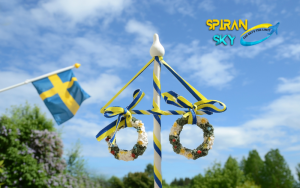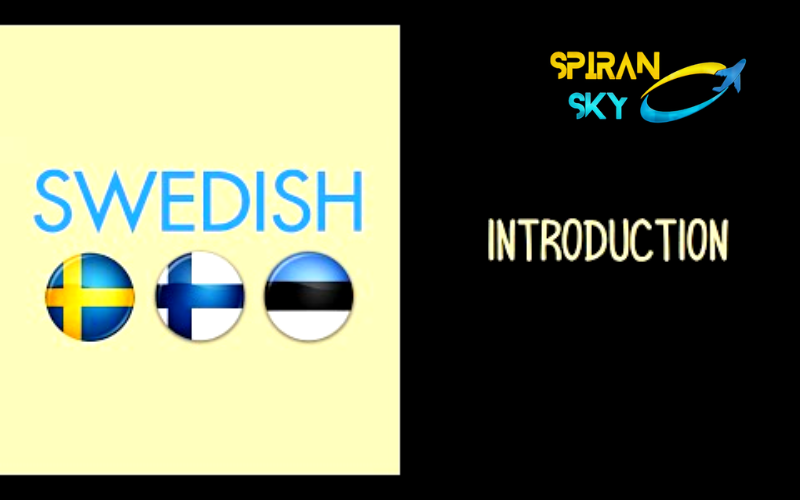The greeting you give someone will usually dictate the course of the conversation that follows. If you don’t use the right words, you can run into a local who doesn’t want to welcome you. Be at ease, though! A list of Swedish greetings can be found here.
I’ve supplied each word’s equivalent in American English, a brief explanation of how to pronounce it, and examples of Situations. In which it might be used.
In order to offer some variation, there are also a number of regional dialects included, including those from surrounding cities. Like Malmö, Gothenburg, and Stockholm.
Even though I’ve heard a million Swedish greetings over the years, only these 29 stand out in my memory and. The memory of the majority of Swedes (through TV and social media). The best of the best when it comes to Swedish greetings, if you will!
Immediately step outdoors and extend a warm greeting to some Swedes!

The Shortcut: “Hej”
The shortest and most typical greeting in Swedish is a short “Hej.” No matter the situation, it will always work, however when used with close friends, it could come off as a. Little too stiff and cold.
The phrase, which has Old Norse roots, became well-known among the general Swedish population in the early 1900s, at a time of nationalistic impulses when Old Norse culture was experiencing a renaissance throughout the Nordic region.
Around the word “Hej,” the great firm Konst I Kaos made the following funny and awkward short video:
The Gothic Association is recognised as having popularised the phrase first in historical terms. As early as the 1800s, they employed it as a “secret” greeting in an effort to resurrect Viking customs and practises for the modern period.
It subsequently developed into Sweden’s customary greeting after being adopted over time by student organisations all around the nation.
Simplest Approach: “Hej hej!”
The only proper greeting is to say hello twice.
A double-Hej can be added to the traditional Swedish greeting without deviating too far from it, which is something that Swedes like doing.
Hejsan is the Correct Salutation
When you want to convey an approachable and non-threatening image, a nice “Hejsan” will go a long way.
The semi-legendary Swedish Mohawk Kid is here with a fantastic example of how to say “Hejsan” to your parents:
The Polite Way: “All right?”
You will always be formally welcomed with “Allt bra?” and asked how they are doing whenever you run into friends and acquaintances.
“Tjena,” the Unofficial Way
If you don’t want to come out as too stiff and rigid, a simple “Tjena” works well in many situations.
It can be used safely while speaking to employees, classmates, and anybody else who does not expect a formal greeting.
An excellent example of how to say it in Stockholm is as follows:
The fascinating origin of the term is the proverb “Your humble servant,” which was abbreviated to.
“Tjänare” in the 1700s when it began to be used among friends in a sarcastic way. It eventually became “Tjena” (which has its own variants as we will see further down).
Like the less well-known German word “servus,” “ciao” originally meant slave in Italian (which also stems from the Latin word for slave or servant).
The More Casual Approach: “Tjabba”
Another spelling of “Tjena,” “Tjabba,” might be used when you want to be even more casual or inject some humour into your salutation.
Pernilla Wahlgren and Nicklas Strömstedt’s fantastic Eurodisco collaboration, which is well translated in the video, makes plainly evident that it is primarily used in the Stockholm area:
Using “Tja” Is The Most Casual Way
The shortest form of any term that may be reduced by human beings is “Tja,” which is also the case with “Tjena.”
In terms of pronunciation and meaning, this form of “Tjenare” is also the most similar to the Italian “ciao.”
This kind greeting, which is frequently used among friends, is ideal when you wish to acknowledge someone in a way that is at least somewhat pleasing without wasting time or resources.
Oh, and this crazy Swedish singer Carola is a perfect example of how to cover all of your bases. She starts with a “Tja,” then follows it with a “Hej,” and then ends with a “Salam”:
“Läget,” says The Homie Way.
I always start a conversation with friends in this way. “Läget?” is short for “How’s it going?”
In their catchy song “Läget d?,” RMK & Toppet demonstrate a great way to use the word. Speaking at 0:55:
“Hall,” said out loud.
When I get home, I call out this to see if anyone is home even though I’m not sure whether they are.
This means that it may be more of a question, which the people of Gothenburg have undoubtedly embraced as you’ll see in the sections that follow.
It would also be acceptable to use this as a sentence to greet your pals while grinning broadly.
Simply avoid doing whatever it is that he is doing:
“Halloj” is the jokester’s way.
When you want to switch things up and establish a lighthearted and carefree atmosphere, say “Halloj.” is not a term that is regularly used in my environment.
The Swedish comedians Peter & Fredde put up a fantastic “Halloj” performance at 0:39. For instance, around 0:39, Swedish comedians Peter & Fredde perform a powerful “Halloj”: The Swedish comedians Peter & Fredde put up a fantastic “Halloj” performance at 0:39. The Swedish comedians Peter & Fredde put up a fantastic “Halloj” performance at 0:39.
The Correct Pronunciation (Morning): “God morgon”
Nothing beats a “God morgon” and a small nod of the head when you greet someone in the morning if you want to maintain a formal and polite tone.
Swedish artist Ida Redig offers a great illustration of how to pronounce it:
The Correct Pronunciation (Daytime): “God dag”
When you run into someone around noon or early in the afternoon and want to maintain a formal and polite tone, you can’t go wrong with a “God dag,” again accompanied with a small head nod.
I thought the following example from Mora Träsk, who is teaching Swedish children how to say “God dag,” could be helpful to anyone else who wants to learn:
The Correct Way: “God kväll”
A simple “God kväll” will do for a polite and formal greeting throughout the evening, and you get extra points if you opt to add a slight head nod.
From the play “Teaterkungen: Gustav III,” here is a lovely method to deliver a “God kväll” by Stefan Andersson (with a helpful French translation):
The Relaxed Way: “Shoo”/”Tjo”
In the larger cities, you may occasionally hear “Tjo” or “Shoo” spoken among friends in casual settings (usually common in but not exclusive to immigrant communities).
Make it “Shoo läget?” by being inventive and adding a “Läget?” after. For extra bonus points, make it “Shoo läget brush?” (How are you, bro?)
An illustration of the difficult daily life of a warehouse truck driver is shown below by some amusing dudes from the South (“Shoo” at 1:31):
(I don’t think it’s meant to be taken seriously, but whatever the goal, it’s very funny.)
The Rural Way is “Huj”
Sincerely, I haven’t heard this one too much. I don’t, however, spend a lot of time in the Swedish countryside. However, now you are aware of what a “Huj” in rural Sweden means.
The Swedish Way is to say, “Morning!”
I’d say Stockholm is the only place in Sweden where a “Morsning!” greeting works.
Saying this anyplace else in Sweden is likely to be met with bewildered stares and instructions to the capital; it should only be used in the morning.
You may take it a step further by adding a “korsning,” which adds a rhyme and a twist and can make even the most glum coworkers smile.
Even if I had tried, I couldn’t have expressed it more effectively than Christer Pettersson:
Saying “Hall eller” is the Gothenburg Way.
When I travel to Gothenburg or run into friends from the Västra Götaland region, nothing makes me smile like a loud, abrupt “Hall eller!”
Is that a greeting or a question? I’m unsure. In any case, for maximum extra points, one should roll out the “r” as much as humanly possible: “Hall ellerrrrrr!”
When addressing someone in this manner, a grin must be present on the face.
Here is a comedic skit that serves as the ideal illustration of how to introduce newcomers from all over Sweden to Gothenburg. Pay close attention at 0:08:
“Hajj hajj,” says The Malmö Way.
Because it is also a manner of saying farewell in Malmö and the rest of Skne, this one can be a little confused. A chance encounter on the street? “Hajj hajj,” with a noncommittal head nod. Want to call someone and bid them farewell? “Haaajjjjj”. Easy as pie!
Here is a wonderful illustration of the differences between Swedish and Scandinavian call endings:
“Hörrdu,” according to Norrland
I’ve travelled to Norrland a lot, and each time I go, I’m reminded of how straightforward and condensed things usually are. It’s incredibly effective and an important aspect of Norrland culture.
In this fashion, the “Hörrdu” from the north is succinctly stated. Unexpectedly, there was no actual greeting, no emotion associated with it, and no accusation implied either. Just the word “Hörrdu.”
Not to be mistaken with the frequent use of “Hörru!” in Stockholm, despite the similarities in their usage.
A classic illustration that holds up to this day is (listen for the first word):
Tjipp is the Värmland Way.
I should point out that not every Värmlander makes this claim. However, between 1971 and 2003, a Värmlänning on television retained it.
This phrase was created by Bengt Alsterlind, the host of the wildly popular children’s television programme “HAJK,” who used it to start each episode by addressing everyone in it.
On his own YouTube channel, he currently regularly plays the following songs (allegedly while sporting a Wu-Tang T-shirt):
The Standard Method: “Hej p dig”
It simply won’t sound nice if millennials or younger folks use this expression. It is only suitable for senior generations.
The Sluggish Way: “h!”
I’ll attempt to explain the following scenario to you:
Around a couch, friends are gathered to watch a movie, play a game, or something similar. One of them turns to face his friends seated next to him after receiving an amusing GIF in a text and says. In a screechy, caveman-like voice.
Using “Ey” in a Big City
It is more prevalent in the heavily populated suburbs of Sweden’s large cities and is interchangeable with both “h” and “Hörrdu.”
Consider this as an illustration (0:10):
The Informal Way: “Va händer?”
This can be uttered with a smile and in a very calm way, but strangely, if you say it out loud while feeling angry, it can also sound quite forceful. Keep your smile in mind!
“Halli hall” is how kindergarteners speak.
became well-known thanks to the unexpectedly popular children’s characters Babblarna (originally aimed to assist kids with learning challenges, but eventually embraced by the entire population of preschool kids in Sweden).
Watch at your own risk—no, they’re really great!
“Tjingeling,” in He Witty Way
This could be spoken by someone who is really excited upon entering the office, or by someone who is trying to be amusing.
It sounds like the attached merchant bells on those little shop doors, if you know what I mean. “Tjing-e-ling”
The clown exclaimed, “Hejsan hoppsan!”
It’s a very flexible way to address a group of people and can be utilised while speaking to coworkers in a Zoom meeting or a class of kindergarteners.
I believe Blondinbella, a former blogger who is now a prosperous company, puts it best:
Using a snap, you can say, “Hey, Tomtegubbar!
Speaking of Christmas, “Hej tomtegubbar!” is by far the most common “snapsong” sung on Christmas eve before taking a group Aquavit shot. As a result, expect jokesters to utter this phrase more frequently throughout the holiday season.
The song can also be sung in a lot more sad (and, I would say, more Nordic) fashion, as Nina Persson from The Cardigans does here (during a charity drive for homeless children), which I feel like we have already heard enough of in this post.




